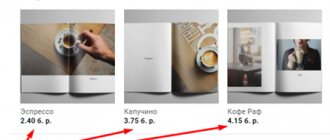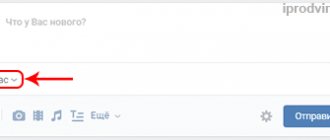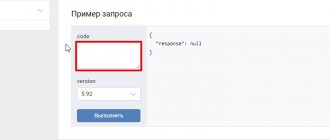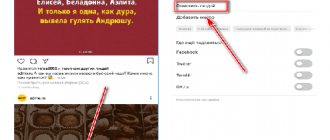The main goal pursued by companies that own accounts on social networks is to attract the maximum number of users to their page. The successful timing of publication determines how many followers will see the information offered. Therefore, it is important to choose the best time to publish posts, when the majority of the audience is active, but at the same time the social network is not oversaturated with other publications.
The analytical agency Popsters conducted research on the dependence of the time of day and day of the week on user behavior on social networks. Based on the data from this study, we can draw conclusions about what time the effectiveness of publications will be highest. Research provides only average data: to determine the best time to post a specific page, it is necessary to conduct experiments with the period of news posting and monitor the activity of subscribers.
Automatic promotion on Instagram without blocks
We recommend : Jesica – an application for promotion on Instagram (from the creators of Instaplus.me). Install Jesica on your Android phone or computer and the app will like, follow and unfollow as if you were doing it yourself:
- No blocks. Limits apply as if you were doing it all manually.
- Safely. You do not need to enter a password for your account.
- High speed. You can give up to 1000 likes and 500 follows per day.
Try 5 days for free >> Advertising
Lifehack: to automate the process of posting publications at the right time, use services for delayed posting .
Dependence of activity on social networks on the day of the week
On average, Monday and Sunday were the most popular across all social networks. Last year, users were most active on Tuesday.
According to the results of this study, activity on social networks remains almost unchanged during the week, with a slight decline noticeable only on Wednesday.
On VKontakte, the day with the highest activity is Monday. The decline is noticeable on weekends, especially on Saturday.
On Monday, Facebook posts received the most reactions on average. The decline occurs on Saturday, but Sunday is no different from weekdays.
On Instagram, posts received the least reactions on weekends.
Publications on Odnoklassniki receive the most reactions on Monday, and the least on Tuesday.
Twitter posts received the most engagement on Sunday and Monday, with declines occurring on Thursday and Friday.
On Telegram, posts received the most engagement on Saturday.
On YouTube , videos uploaded on Tuesday and Sunday received the most reactions, and Wednesday was the quietest day.
In general, across all social networks, posts receive the most engagement on Sunday and Monday; the worst day for this indicator is Wednesday.
Choosing the right timing for posting
What time is the most favorable for posting? It’s worth emphasizing right away that a lot depends on the target audience, as well as the topic of the group. Therefore, there is no standard framework for every community. In one group, the morning may be the best time for posting, in another group it may be the evening.
Audience activity by time of day
VKontakte publications published from 21 pm to 1 am receive more reactions. The worst results are posts posted between 3 and 5 am.
On Facebook, the situation is different - the greatest effect is achieved by posts published at 15 and 17 hours of the day, and the worst time for posting is midnight.
Instagram posts published between midnight and 7 am receive the least amount of likes and comments. There are two noticeable peaks of activity on the social network: 10-11 am and 20-21 pm.
Odnoklassniki user activity decreases from 11 pm to 7 am.
Twitter posts get fewer reactions between 4 and 7 am, and the best time to post is 10 am.
On YouTube, the average number of reactions to a post drops at 10-11 p.m., but rises again at 1 a.m. and decreases by 3 a.m. Morning and mid-day, from 9 a.m. to 2 p.m., are the most active periods (along with 1 a.m.).
On Telegram , posts posted at 3 am and 10 am have the most reactions.
The graph below shows the distribution of activity by time of day on average across all social networks.
When is the best time to post videos on YouTube?
The majority of YouTube users are people aged 18 to 54 years, 10% of the audience are children and teenagers from 12 to 17 years old. Most often, video clips are viewed by men aged 18 to 24, who are interested in cars, electronics, sports and computer games. The most active users are considered to be young people from 25 to 34 years old.
According to data from the Frederator Networks site, the maximum number of users gathers on YouTube from 14 to 16 hours from Monday to Wednesday, from 12 to 15 hours from Thursday to Friday and from 9 to 11 on weekends. This is the best time to post videos on your channel. Thursday, Friday and Saturday are the days on which videos receive the most views and likes.
Instructions to help: How to upload a video to YouTube
Recommendations for posting videos on YouTube:
- determine the average age of your target audience. Schoolchildren are free in the afternoon, and working users watch videos most often in the evening;
- take into account the difference in time zones if you want to reach the maximum audience around the world;
- post videos regularly at the same time, so subscribers will know when to come to the channel for a new video clip;
- Monitor the video view statistics to adjust the time if necessary. Statistics can be viewed in the Creative Studio - YouTube analytics.
Type of content and its impact on engagement
Popsters breaks all publications into 4 formats: text, photo, video, link.
On VKontakte, posts with photos turned out to be the most effective, while posts with videos and links are inferior to posts with photos and text.
on Facebook , but posts with links perform the worst.
On Instagram, content type had little effect on engagement. In the study, a link to Instagram was considered to be tagging other accounts via @ in the text or links to external resources defined in the text (despite the fact that they are not clickable).
In Odnoklassniki, posts with text received the most reactions, and the least users interacted with posts containing a link. Posts with videos received fewer reactions than posts with photos.
On Twitter , the video format is noticeably declining; engagement is distributed almost equally among other types of content.
The unique situation with photos on Telegram is the only platform where it is the most ineffective format. This is probably due to the limitation on the amount of text in the image caption: the main information is published separately from the photo, and the latter does not receive forwards.
In general, the photo format is the leader in all social networks, the text is the second most effective. Videos receive fewer engagements than photos, and links are predictably the worst-performing content type.
How often to post
Finally, the amount of time between posts is important. It’s good if the interval is approximately equal, for example, every three hours. Although some people post every hour to be sure of the timing of publications, this is not entirely the right tactic. It’s better to publish fewer, but high-quality, posts than many, but uninteresting ones. One catchy post can attract more attention and be statistically better than several uninteresting ones. Moreover, some users are annoyed by too many posts from one group.
Text length
Graphs of activity in publications with different text lengths illustrate the saying “The more, the merrier.” On most platforms, publications with lengthy text received the most reactions.
Keep your post short: up to 160 characters.
Average post: 160-1000 characters.
Long post: more than 1000 characters.
On VKontakte, posts with short texts received the maximum number of reactions.
Medium-sized posts perform best on Facebook, while long posts have proven to be the worst-performing format.
Instagram statistics confirmed the trend for long texts: posts with them received the most engagement.
In Odnoklassniki, the situation is the opposite: short texts are more effective than long and medium ones.
Telegram and YouTube audiences responded better to long texts, while short ones received the least reactions.
Text length/Day of week
On VKontakte, the leadership of short texts remains constant throughout the week - even on Sunday, when interest in long reads is growing on other sites.
On Facebook, long texts get more reactions at the beginning of the week and on Sunday, but at the weekend short texts win out over other lengths for the first time in a week.
On Instagram, the distribution of engagement by text length remains unchanged throughout the week.
On Odnoklassniki, interest in short texts grows over the weekend, and longreads work best on Monday.
On Telegram , Thursday is medium text day. On other days, long posts are in the lead. Users respond best to them on Sunday.
In general, across all social networks, the day of the week has little effect on interest in a certain length of text. There is a noticeable increase in interest in long-form materials on Mondays, Wednesdays and weekends, as well as in short texts on Sundays.
Choose a time for your audience
Social networks are reluctant to share information about when your followers are online. Only Facebook and Instagram provide statistics by time and day of the week.
On Facebook, the data is located in the “Publications” tab of the business page statistics, on Instagram - in the “Audience” section of the business account statistics.
Facebook shows audience activity by time and day of the week
Other popular social networks in Russia do not provide data on subscriber activity. To decide on a release schedule, you need to publish posts at different times and see when they get the most views.
General
On VKontakte there is almost a direct correlation between the number of subscribers and the number of posts: large pages, from 100 thousand subscribers, publish more than 10 posts per day.
The situation with ER (graph: ERpost) is the opposite: in small communities, each post receives better engagement. But at the same time, the total ER for all publications per day (ERday) grows in proportion to the number of subscribers and publications.
On Facebook , larger pages tend to post more per day, but each post has a lower ERpost.
On Instagram, small accounts with up to 10 thousand followers receive the best engagement per post: the average ERpost for them is 4.3%.
However, there is no significant drop in ERpost with the increase in the number of subscribers from 50 thousand to million-plus accounts: the figure remains at the level of 1.96-2.36%.
On Odnoklassniki , as on VKontakte, large groups publish more posts, each of which receives fewer reactions.
Twitter accounts (up to 10,000 subscribers) showed the best engagement per post, while large accounts showed the worst ERpost. It is noteworthy that, unlike other platforms, here ERday does not grow in proportion to the number of subscribers and posts - each tweet gains reactions on its own, regardless of the other content of the account. This is explained by new algorithms for generating Twitter feeds.
On YouTube, small accounts receive the best engagement both per post and on average per day. The likely reason is that creating video content is more labor intensive, and even large channels do not publish multiple posts per day.
Useful articles on a similar topic:
- Methods of analyzing competitors on social networks;
- A detailed guide to the TikTok app;
- Audience of Runet social networks - latest data.











